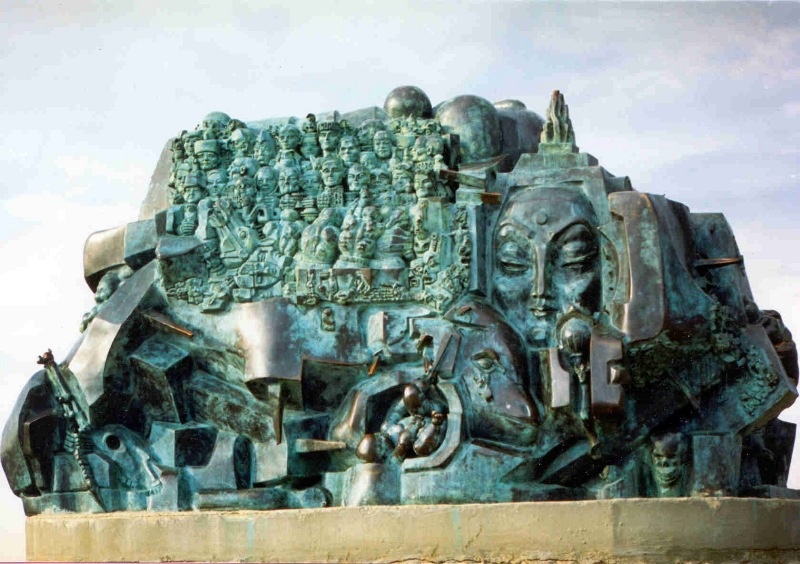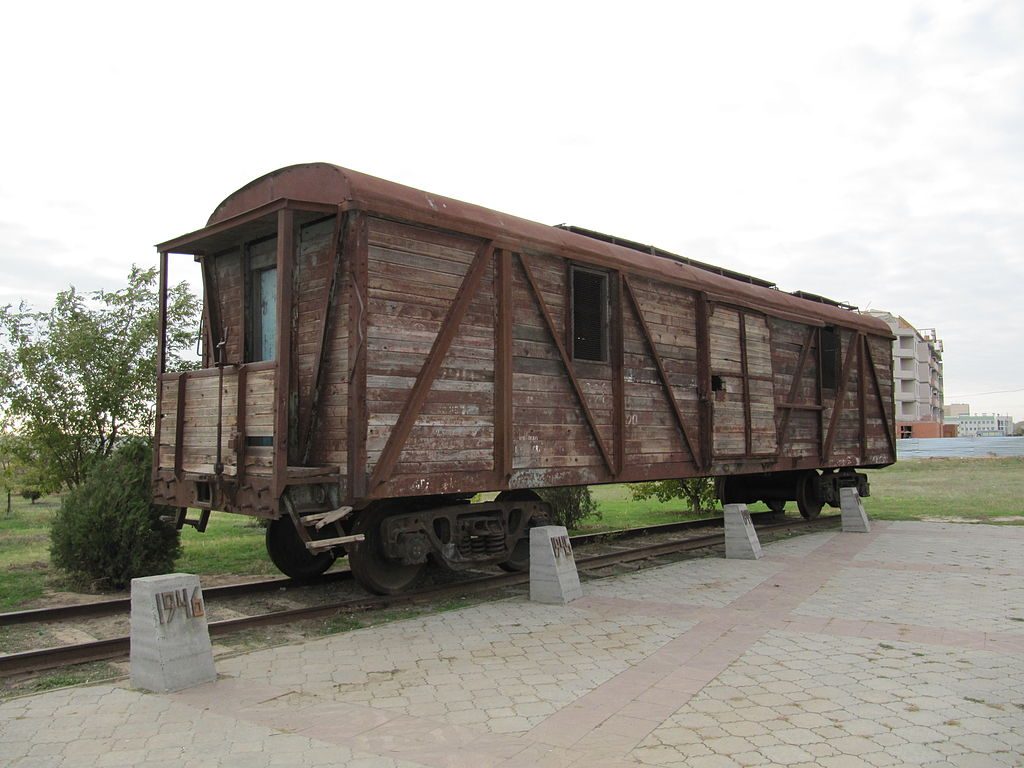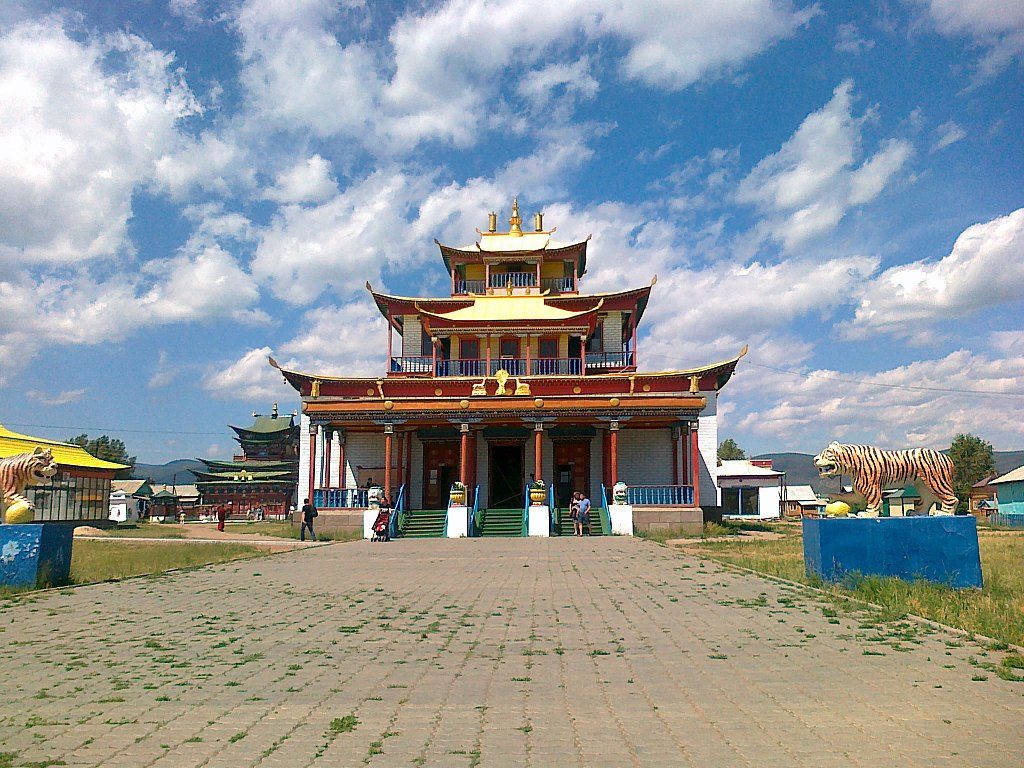Note: 2020-21 marks the 20th anniversary of the Havighurst Center. One of the ways we will mark this occasion is through a regular “Five Questions With …” series, where we will check in with former colleagues, postdoctoral fellows, and students. In this latest installment, Havighurst Center Director Stephen Norris asked Ted Holland five questions. Dr. Holland was a postdoctoral fellow at the Center from 2013-16 and is now Assistant Professor of Geography in the Department of Geosciences at the University of Arkansas.
1. A lot of your research has focused on the Republic of Kalmykia: how did you first become interested in that region of Russia? What are some of the significant dynamics — political, cultural, social — in Kalmykia?
My path to studying Kalmykia was circuitous. My master’s thesis was on national identity among the minorities of Dagestan, one of the republics in Russia’s North Caucasus. During that time, I was also working with a Dagestani geographer on internal migration within the republic. I was initially interested in working in Dagestan, but when I was beginning my PhD fieldwork in the late 2000s the region wasn’t safe. My colleague in Dagestan put me in touch with a professor at Kalmyk State University who encouraged me to visit the region and facilitated my research there. There weren’t many people working on Buddhism in Russia–still aren’t!–and I felt that this was a niche I could fill in our academic knowledge of the country. Overall, I think that the view from the margins matters, in Russia and elsewhere. It can be a challenge in Russia for a whole host of reasons, but I would make the case that scholarship on contemporary Russia needs to be more attentive to the country’s minority groups and geographic peripheries.

Ernst Neizvestny’s sculpture “Exodus and Return.” 

Two important dynamics in Kalmykia are Buddhism–more on that below–and the legacy of the deportation of the Kalmyk population en masse for purported collaboration with the Nazis during World War II. The sculptor Ernst Neizvestny, who is perhaps best known for the Mask of Sorrow in Magadan in the Russian Far East, sculpted the deportation memorial in Elista, Kalmykia’s capital. It is called Exodus and Return, and is the gathering spot for commemorating the deportation every December. These dynamics are more complex than just a monument and commemoration, especially given the increasingly public presence of memory projects associated with the war in Putin’s Russia. I had a Fulbright grant to Kalmykia in 2017 and was there for Victory Day (May 9). There was a massive parade from the city center to the World War II monument and then an Immortal Regiment march. I participated but was thinking the whole time about the fact that the Kalmyks had been deported for a year and a half by the time the war ended. Perhaps that’s what other participants were thinking too, and performing the march became even more important as a display of allegiance to the state.
2. When most people think of religion in Russia, they tend to think first of Russian Orthodoxy, then perhaps Islam, and then maybe Judaism. Yet Buddhism also has a long history in Russia and in Kalmykia particularly, the subject of several of your articles. How did Buddhists in the region experience the Soviet era and how has Buddhism revived since 1991?
The Soviets were systematic in their crackdown on Buddhism, but this came after a similar campaign against the Russian Orthodox Church. The worst years for Soviet Buddhists were the late 1930s, with temples closed and razed and monks imprisoned and killed. And like Orthodoxy, Buddhism came to be viewed as something that could be useful to the Soviet state. For example, in 1946 Ivolginsky Datsan opened in the Siberian region of Buryatia; this was the seat of Soviet Buddhism and one of only two functioning Buddhist temples in the country in the late Soviet period. When the Dalai Lama first visited the USSR in 1979, he went to Buryatia.

Under Gorbachev, Buddhists in Kalmykia established the first post-deportation religious organization in 1988. In the interim between the Kalmyks’ return from deportation in 1956 and 1957 and Gorbachev’s reforms, there were former monks who came back to Kalmykia and practiced Buddhism in relative secrecy; this is a fascinating time in the history of Buddhism in Kalmykia that scholars are just now starting to explore in more depth. In my articles on Buddhism in post-Soviet Kalmykia, I have built the case that the republic’s religious revival has been institutional and linked primarily to national identity. It takes the form of temple construction, or people identifying as Buddhist but not actively practicing the religion. I’m also interested in the role that the US-based Kalmyk diaspora has played in the religion’s revival. The head of Kalmykia’s leading Buddhist organization, Telo Tulku Rinpoche, was born in the US to Kalmyk parents who came to the States after World War II. And the politics associated with Tibetan Buddhism’s international profile and appeal matter a lot in Russia today, as well. The Dalai Lama’s last visit to Russia was in 2004, when he stopped in Kalmykia for a couple of days. He hasn’t been back since. Russia’s Buddhists are ever hopeful that he will secure a visa to visit, but it has been almost two decades since this last trip. Instead, many Kalmyk Buddhists go to India or elsewhere to hear the Dalai Lama teach.
3. Another strand in your research concerns violence in the North Caucasus region: what are some of the most important conclusions you have reached related to this topic?
The North Caucasus are a fascinating part of Russia; I was fortunate to travel to Dagestan in April 2017 when I was in Kalmykia on the Fulbright. I spent five days in the republic’s capital of Makhachkala, gave a talk at the local university, traveled to the city of Derbent (Russia’s oldest city, though this isn’t without controversy), and spent some time in the mountains including a visit to the silversmith factory at Kubachi. It felt safe–the roads were by far the most dangerous part!!
As for violence (e.g. bombings, shootings, assassinations,
battles between militants and the state) in the region, two things stand out:
1) the diffusion of violence from Chechnya to Ingushetia and then Dagestan
after Ramzan Kadyrov secured control over Chechnya around 2007; and 2) the
decline in violence in the North Caucasus over the past decade or so. There is,
of course, nuance to this story beyond these two overarching conclusions. There
was a lot of violence in the region in the early 2000s, with this happening
almost exclusively in Chechnya. At the end of that decade there were a number
of high-profile attacks in Dagestan. Violence declined in the region in part
due to significant federal subsidies provided by Moscow to Chechnya, Dagestan,
and other republics, as well as the tacit encouraging of militants to go to the
Middle East to fight with ISIS (where many of them were killed). There is still
violence in the region, but these events are more the exception than the rule.
At some point I hope to write a book on Russia’s long war in the North Caucasus,
making the case that Russia’s experience in the region is a microcosm for the
country’s post-Soviet political experience: the chaos of the 1990s as reflected
through the first war in Chechnya, the extension of state power during the
2000s, and the securing of control through cooptation and coercion in the
2010s.
4. What research project (or projects) are you pursuing now and what scholarly interventions are you hoping to make in it (or them)?
So many projects, so little time! I have been working with Elvira Churyumova from the University of Cambridge on the ways in which Kalmyk DPs amended their life stories to avoid repatriation to the Soviet Union from Europe after World War II ended, drawing on archival data from the International Tracing Service that is held digitally at the U.S. Holocaust Memorial Museum. This paper is forthcoming at Slavic Review and should be out in the Summer 2021 issue. And along with Baasanjav Terbish, we are applying for funding to extend the Kalmyk Cultural Heritage Documentation Project (https://www.kalmykheritage.socanth.cam.ac.uk/en/index.php?language=en) to the United States (the project has previously focused on Russia with some interviews in China). This three-year project would interview Kalmyk Americans and gather their life stories through interviews and digital ethnography. The intended culmination of the project is a book on Kalmyk Buddhism in Russia and the United States. Another project in development is with Carl Dahlman at Miami, on autonomy as a way in which states manage their diverse political geographies. I also have papers in various stages of the writing process on topics ranging from the documentary film Icarus (about doping at the 2014 Sochi Olympics) to drug trafficking in Kyrgyzstan to the social media network Parler and right-wing protest in the U.S. Jack of all trades but master of none.
5. You spent three years as a postdoctoral fellow here at Miami and at the Havighurst Center: what stands out from that time?
The students and faculty of Miami University. I had the privilege of teaching some exceptional students in my Russia-related courses, and it has been exciting to see them go on to do great things in their chosen professions. As for the faculty, I have fond memories of sitting around the table in Harrison Hall eating lunch, discussing a working paper, or chatting with leading scholars in the field. The summer 2016 conference in Vilnius, Lithuania was another highlight, but also a poignant memory because it was the end of my professional affiliation with the Center and the last time I spent with Karen. I owe a tremendous debt of gratitude to her for giving me the opportunity to be a postdoctoral fellow at the Havighurst Center. I often tell aspiring academics that persistence is key, but it also takes a lot of luck and great mentorship. I was fortunate to have the last in abundance during my time at the Center.
